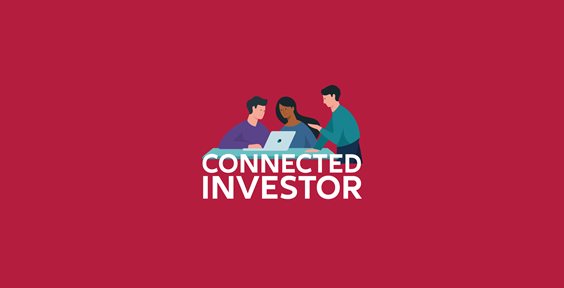5 minute read
An active investment approach for long-term wealth creation

Active managers have the freedom to buy and sell holdings during volatility, responding to changing market conditions. Although active funds do typically cost more than passive, investors are paying for a more agile and flexible approach. With a constant focus on global markets and individual company performance and risk, Brunner’s managers aim to deliver capital growth and rising income.
Key takeaways
- Active management gives portfolio managers the flexibility to respond to changing fortunes for companies.
- Brunner has a global, active remit, allowing its managers to buy and sell the right businesses as needed.
- The aim of this flexibility and responsiveness is to help investors to protect and grow their wealth.
Markets have had a turbulent few years. The COVID-19 pandemic knocked markets back, then escalating geopolitical tensions did the same, topped off by rising inflation and interest rates.
These significant global events required thorough analysis, followed by adjustments to global investment trusts in order to protect wealth.
Active management gives managers the ability to respond to these volatile markets. That’s what sets it apart from its passive counterpart, where holdings simply track an index from inception. This does generally make passive funds cheaper than active, but it also means there’s no one actively making decisions about the portfolio and associated risks on an ongoing basis.
The Brunner Investment Trust is actively managed with a global remit. The portfolio managers have the freedom to pick what they see as the best companies from around the world and the flexibility to respond to changing market conditions. That is how it aims to deliver its dual objective of capital growth and rising income over the long term.

Valuation is crucial
Brunner’s managers look to choose some of the best companies in the world for their portfolio. But not only is it important to select the right company in the first place, it’s also crucially important to buy into it at the right valuation, and eventually sell it at the right point too. Ideally, the managers spot an opportunity before it reaches its full potential and whilst it is still growing, and then exit if the market is looking overdone and they think a bubble may be forming.
That’s what active management for wealth generation is all about. Brunner’s managers and their supporting teams at Allianz Global Investors spend thousands of hours watching, analysing and monitoring company performance, aiming to buy into the right business at the right time (judged on multiple metrics), and exit at hopefully the right time too. And it’s that focus, flexibility and responsiveness that differentiates active management from passive.
Brunner’s track record speaks for itself. The trust has found itself ahead of its benchmark for five consecutive years, net of fees1. Co-lead portfolio manager, Julian Bishop, comments, “We feel like we've done a good job across a wide range of market conditions, without taking too much risk. We hope that continues, but you have to work hard to outperform. You're constantly thinking and using your judgement.”
Active ownership
Active management gives way to active ownership. Holding stakes in businesses allows the Brunner managers to actively engage with those management teams. Their collective shareholdings give the managers a voice to hold leadership teams to account. Julian explains, “It's a reminder to management teams that somebody’s watching, somebody's judging, somebody owns them. We're holding them to account.”
The managers can express any concerns directly to the most senior people in the business and potentially influence how proceedings are run, ensuring best standards are adhered to. That’s a powerful means of driving change where necessary.
As passive funds do not have managers overseeing them in the same way, there is no sense of active ownership or the ability to create change.
The cost of active management
All this thought and analysis does contribute to the cost of active management, which is generally higher than for a passive fund. That cost is deducted from a fund’s performance which means the investor won’t then take home all the performance gained. It would be prudent for any investors considering active management to look carefully at the fund’s costs.
Brunner’s managers have worked hard to keep costs down for investors. Because a holding in an investment trust is the same as any listed share, the share price paid by an investor includes the effects of the management charges as well as other operating expenses. Investors will still pay whatever fee is levied by their chosen investment platform or stockbroking service of course.
Don’t forget, there is a cost to most passive investments too, even if they are generally quite modest. All investment products will come with an element of cost somewhere.
Protect and grow wealth
Brunner's active approach allows for flexibility in response to changing market conditions, so managers can enter and exit holdings at a time that they hopefully feel is right. This constant focus on global markets and company performance reinforces Brunner’s capacity to help investors to protect and grow their wealth for the long term. Whilst there might be a higher cost to active management, we believe that in the long run that cost can contribute to opportunities for investors.

“We feel like we've done a good job across a wide range of market conditions, without taking too much risk. We hope that continues, but you have to work hard to outperform. You're constantly thinking and using your judgement.”
Julian Bishop, Co-lead portfolio manager
1 Net of fees means fees have been deducted. In other words, the trust has still outperformed benchmark even after the cost of fees has been deducted.







